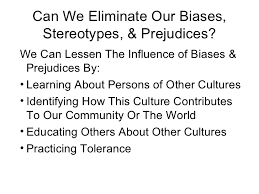Research Around The World
The international website that I chose to further study is the Early Childhood Australia, A voice for young children.
The current topic that I explored is titled:
The Transition to school
Early Childhood Australia has
many print and online resources to assist parents, caregivers and educators in
helping children make the transition from child care to preschool, and from
preschool to school.
All links and resources on
transitions to school have been quality-assured by Early Childhood Australia.
Starting school can be stressful for children. The buildings are
bigger, there are more children and they are the smallest in the playground.
There are fewer adults and more rules which they don’t know and for many the
classroom will be more formal.
A successful first year of school is the foundation for: children’s successful learning and strong school–parent relationship.
I have learned that:
Families all around the world promote many experiences
and interactions to prepare children for school, including providing a range of
resources, engaging in particular routines and interactions, and creating home
learning environments that support children’s engagement in school.
Starting school is a time of change for children and for
families, as they experience a specific set of demands and make adjustments to
meet those demands.
Three levels of change during the
transition to school have been identified (Griebel & Niesel, 2009): change
at the individual level; the relationships level; and the contextual level.
Each of these changes impacts on
how children and families experience the transition to school. Educators who
are aware of these changes are well placed to create responsive and supportive
educational environments for all involved in the transition to school.
Individual changes
Often, children are very clear about what changes they have made
as they start school. The major change they report is that they are ‘big’ and
now at ‘big school’.This change in identity is marked
by the school uniform and children’s adaptation to the routines and
expectations of school.
Parents also experience changes
at the individual level as they become the ‘parents of a school student’. This
identity change requires parents to adjust to a range of school expectations
about attendance, uniform, possible involvement at school and homework. It is
also a time when parents feel they are being judged—are they ‘good’ parents?
Have they prepared their children well? Do they get them to school on time and
in the correct uniform? Do their children ‘fit into’ the school environment?
Everyone involved in transition to school experiences changes at
the relationship level. As children leave prior-to-school settings they, and
their families, may lose contact with staff, children and other families from
those settings. Some children start school with friends, but their friendship
groups may change considerably as they adjust to school. For children with
special education needs, and their families, the changes in relationships are
often major, as prior-to-school support ceases and new relationships with new
resource staff need to be built.
Relationship changes As some relationships are lost, others are built between and
among children, families and school staff. Building these relationships may
require new strategies—for example, communicating with teachers at school can
be different from communicating with educators in prior-to-school settings.
Many parents also seek avenues to build relationships through parent councils,
school canteen or volunteer class support. However, for many working parents,
or parents who feel uncomfortable in school settings, these options may not
always be available.
Relationships within families also change as children start
school. For example, children often seek greater independence to match their
changed status. At the same time, they may also seek greater support as they
navigate the expectations of school. Many parents report mixed feelings as
their children start school: often a sense of pride and achievement, coupled
with a sense of loss as children move into different worlds beyond the family.
Contextual changes
When children start school, families need to coordinate school,
family and work responsibilities. Making sure that children are at school at
specific times may mean that schedules for other family members need to change.
This can be quite challenging if different children attend different schools, or
if work, family and school schedules conflict.
Additional Information:
Links For Parents
daunting task of navigating through the first year of
school. This book talks about what parents want to know as their child
starts school, to make the first year a good experience for everyone.
Going to school: Starting school
Handy step-by-step advice for parents, from preparation and the first days of
school, to settling in and dealing with separation pangs.
School readiness
A practical analysis of what school readiness means, including examples of
children’s social and emotional maturity.
Starting school
A helpful list of things for parents to do with their children just prior to
starting school and during the first few weeks.
References
Dockett, S., Perry, B., Kearney, E., Hampshire, A., Mason, J.,
& Schmied, V. (2011). Facilitating children’s
transition to school from families with complex support needs.
Retrieved 11 January, 2012,
fromwww.csu.edu.au/__data/assets/pdf_file/0009/154899/Facilitating-Childrens-Trans-School.pdf.
Griebel, W., & Niesel, R. (2009). A developmental psychology
perspective in Germany: Co-construction of transitions between family and
education system by the child, parents and pedagogues. Early
Years, 29(1), 59–68.
Acknowledgement
This research was supported by the Australian Research Council
Grant LP0669546.



































